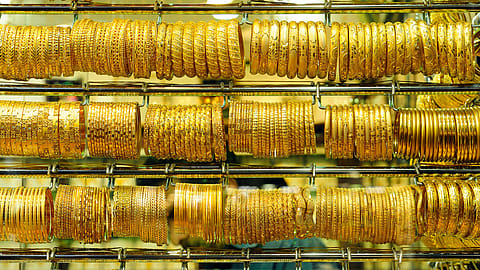Government discontinues medium and long-term Gold Monetisation Deposits amid rising prices
Launched in 2015, the GMS was designed to mobilize idle gold held by households and institutions, offering interest payments in return.

The Government of India has discontinued the Medium Term and Long-Term Government Deposit (MLTGD) components of the Gold Monetization Scheme (GMS) effective March 26, 2025, as stated in the RBI press release.
This decision, attributed to evolving market conditions and the scheme's performance, aims to reduce future governmental obligations and mitigate risks associated with fluctuating gold prices.
The designated Collection and Purity Testing Centres (CPTCs), GMS Mobilisation, Collection & Testing Agents (GMCTAs), and bank branches will no longer accept gold deposits for MLTGD after March 25, 2025. However, designated banks retain the option to offer Short-Term Bank Deposits (STBD) under the GMS.
Launched in 2015, the GMS was designed to mobilise idle gold held by households and institutions, offering interest payments in return. The scheme comprised three deposit tenures: Short-Term Bank Deposits (1-3 years), Medium-Term Government Deposits (5-7 years), and Long-Term Government Deposits (12-15 years). While the medium and long-term options have been discontinued, banks may continue to offer short-term deposits based on their commercial viability.
Existing deposits under the discontinued MTGD and LTGD will remain valid until their respective maturities, ensuring that current depositors are not adversely affected. Upon maturity, depositors can redeem their gold either in physical form or cash, based on their chosen option. Those with ongoing long-term deposits will continue to receive interest and can withdraw their gold as per the contract. In case of premature withdrawal, existing rules will apply, which may include penalties or deductions.
Moreover, an eligible depositor can open a Gold Deposit Account with any designated bank after fulfilling the KYC requirements. Typically, deposits under the scheme are made at the Collection and Purity Testing Centre (CPTC) or through a Gold Monetisation Scheme Mobilisation, Collection & Testing Agent (GMCTA). The gold's purity is assessed in the depositor's presence, and a deposit receipt for standard gold of 995 fineness is issued. The GMCTA also notifies the depositor's bank about the accepted deposit.
The designated bank will then credit the depositor’s Short-Term Bank Deposit (STBD) account either on the same day the depositor submits the deposit receipt or within 30 days of the gold being deposited at the CPTC/GMCTA, whichever comes first.
Recommended Stories
Interest on the deposit begins accruing from the date the gold is converted into tradable gold bars or 30 days after its receipt at the CPTC/GMCTA, whichever is earlier.
Further, depositors can consult with their respective banks to understand how these changes may impact their investments and to explore available options under the revised framework.